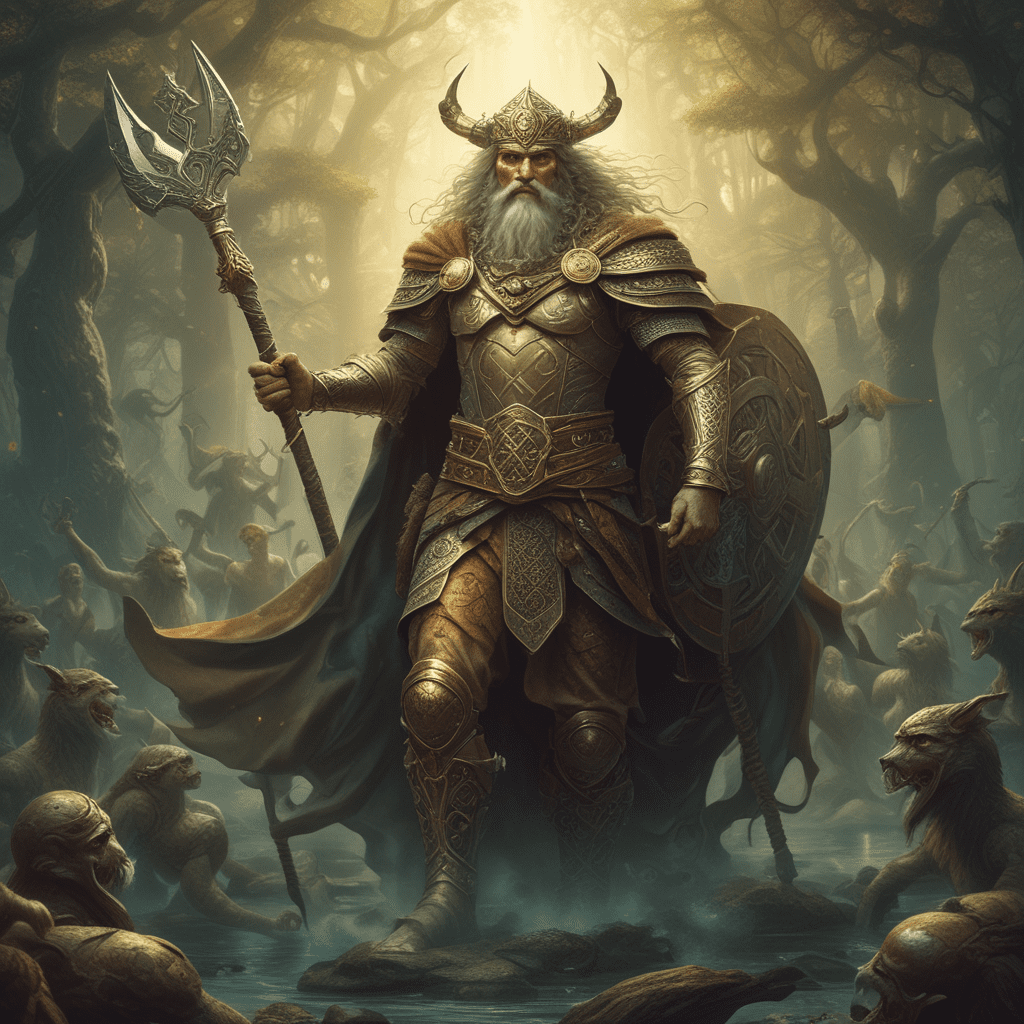The Heart’s Journey: Epic Quests for Love in Mythology
I. Introduction
Throughout the ages, love has served as a central theme in mythology, manifesting in various forms and inspiring countless stories. From the passionate romances of gods and mortals to the enduring bonds of friendship and familial love, these narratives encapsulate the complexity of human emotions. Epic quests, often depicted alongside themes of love, highlight the trials and tribulations faced by characters in pursuit of their hearts’ desires. This article aims to explore the intersection of love and adventure within mythological tales, illustrating how these epic journeys shape and define the characters involved.
II. The Nature of Love in Mythology
Love in mythology is multifaceted, encompassing a variety of relationships and emotions. It can be categorized into several types:
- Romantic Love: Passionate and often tumultuous, romantic love drives many heroic quests.
- Familial Love: Bonds between family members that can lead to acts of loyalty and sacrifice.
- Platonic Love: Deep friendships that inspire characters to embark on journeys for their companions.
Moreover, love acts as a transformative force within these stories, altering characters’ destinies and leading them toward growth or destruction. Cultural variations also play a significant role in the portrayal of love, as different societies imbue their myths with unique values and beliefs regarding relationships.
III. Heroic Quests: Love as a Motivating Force
Heroic quests in mythology often symbolize the journey one undertakes to achieve a noble goal, transcending personal limits and embracing challenges. Love frequently serves as the primary motivator for these quests, driving heroes to confront formidable obstacles. Some legendary figures who embarked on such quests include:
- Orpheus: Venturing into the underworld for his beloved Eurydice.
- Theseus: Battling the Minotaur to rescue Ariadne.
- Hercules: Completing his labors partly to win back the favor of Deianira.
Through these journeys, love shapes the heroes’ identities, influencing their choices and ultimately defining their legacies.
IV. Greek Mythology: Love’s Trials and Triumphs
In Greek mythology, love is often portrayed as a powerful force that compels individuals to confront fate. The stories of Orpheus and Eurydice, Pygmalion and Galatea, and Psyche and Eros serve as prime examples:
- Orpheus and Eurydice: Orpheus’s descent into the underworld to retrieve Eurydice showcases love’s power over death, illustrating how profound love can inspire extraordinary courage and resilience.
- Pygmalion and Galatea: This tale reflects the quest for ideal love, where Pygmalion, a sculptor, falls for his own creation. His fervent desire brings Galatea to life, symbolizing the transformative nature of love and artistry.
- Psyche and Eros: The challenges Psyche faces to unite with Eros reveal the trials necessary for achieving true love, emphasizing the importance of trust and perseverance in relationships.
V. Norse Mythology: Love Beyond Fate
Norse mythology presents love as a force that can defy destiny, with tales that intertwine romance with fate and sacrifice. Key stories include:
- Freyr and Gerðr: Freyr’s love for the giantess Gerðr drives him to sacrifice his sword, showcasing how love can lead to significant personal loss.
- Sigurd and Brynhildr: Their tragic love story is marked by betrayal and manipulation, reflecting the complexities and darker aspects of love intertwined with fate.
- Significance of Sacrifice: Norse tales often emphasize sacrifice, illustrating that love can demand profound personal costs, echoing the theme of devotion.
VI. Eastern Mythology: Love in Harmony with the Cosmos
In Eastern mythology, love is frequently depicted as harmonious and integral to the cosmic order. Notable stories include:
- Rama and Sita: In Hindu mythology, their love story symbolizes duty, devotion, and the struggles faced in the pursuit of righteousness.
- Liang Shanbo and Zhu Yingtai: Often referred to as the ‘Chinese Romeo and Juliet’, their tragic love story highlights themes of loyalty and societal constraints.
- Cosmic Love in Taoism: The balance of Yin and Yang reflects the interplay of opposites, illustrating how love exists within the broader harmony of the universe.
VII. Indigenous Mythologies: Love and Community
Indigenous mythologies often emphasize communal love and connection to the land, showcasing how love transcends individual relationships. Examples include:
- Native American Stories: Many narratives illustrate love as a bond with nature and the community, emphasizing respect and harmony with the earth.
- African Mythology: Love is often depicted as a communal bond, where relationships extend beyond the individual to encompass family and tribe.
- Australian Aboriginal Dreamtime Tales: These stories frequently portray love as a creation force, linking human relationships with the origins of the land and culture.
VIII. Modern Retellings of Mythological Love Stories
Today’s literature, film, and art have significantly impacted how ancient mythological love stories are perceived and retold. Contemporary adaptations not only breathe new life into these narratives but also make them relevant to modern audiences. Notable examples include:
- Literature: Novels such as “Circe” by Madeline Miller reimagine classic myths, exploring themes of love and identity.
- Film: Movies like “Troy” and “The Shape of Water” draw on mythological elements to explore complex relationships.
- Art: Modern artworks often reinterpret mythological love stories, emphasizing their emotional depth and timeless relevance.
These retellings not only preserve ancient narratives but also highlight the enduring nature of love as a theme that resonates across cultures and eras.




